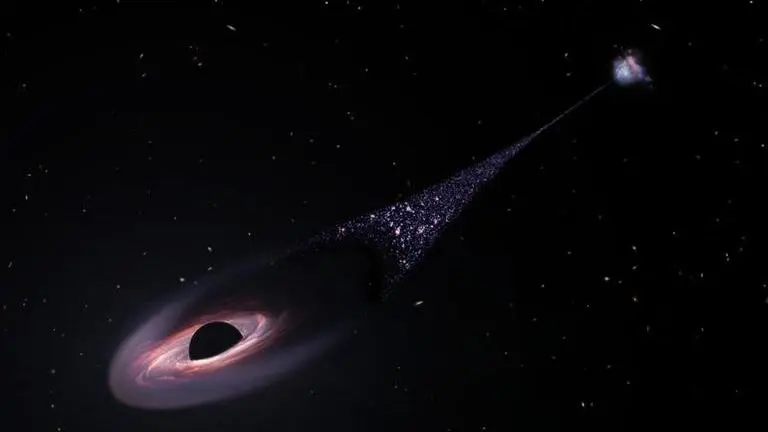Updated 8 April 2023 at 19:46 IST
NASA warns about a 'monster' black hole travelling through universe at huge speeds
Unlike other black holes that have been observed destroying stars, this one isn't and it is transversing through the universe at an incredible speed.
- Science News
- 3 min read

A potential supermassive black hole lurking in intergalactic space has caught the attention of NASA experts. Unlike other black holes that have been observed destroying stars, this one isn't and its incredible speeds could take it from Earth to the Moon in under 15 minutes. The experts believe this black hole has left a trail of newborn stars stretching 200,000 light-years-long as it moves through galactic gases, according to evidence found by NASA's Hubble Space Telescope. Pieter van Dokkum of Yale University in New Haven, Connecticut, noted that the observations suggest a wake behind the black hole where gas cools and forms new stars, as per a report from the Mirror.
“So, we're looking at star formation trailing the black hole. What we're seeing is the aftermath. Like the wake behind a ship we're seeing the wake behind the black hole. Gas in front of it gets shocked because of this supersonic, very high-velocity impact of the black hole moving through the gas. How it works exactly is not really known. This is pure serendipity that we stumbled across it,I was just scanning through the Hubble image and then I noticed that we have a little streak," van Dokkum said. “I immediately thought, 'oh, a cosmic ray hitting the camera detector and causing a linear imaging artefact. When we eliminated cosmic rays we realised it was still there. It didn't look like anything we've seen before," he added.
Where is the black hole located?
The black hole lies at one end of a 200,000 light-years-long column of newborn stars, stretching back to its parent galaxy. Unlike other black holes, it appears to be leaving stars intact as it tears through galactic gases at incredible speeds - which could carry it from Earth to the Moon in under 15 minutes. The outermost tip of the column is where a strikingly bright knot of ionised oxygen can be found. The motion of the black hole striking the gas is likely shocking and heating it, according to researchers. Alternatively, radiation from an accretion disc around the black hole could be the cause.
NASA's Hubble Space Telescope revealed evidence of the wake it leaves behind, with gas cooling and forming stars as the black hole moves through the galaxy. In other space news, astronomers using the James Webb Space Telescope say they have discovered four of the oldest galaxies in the known universe, created just 300 million years after the Big Bang.
Published By : Digital Desk
Published On: 8 April 2023 at 19:46 IST
